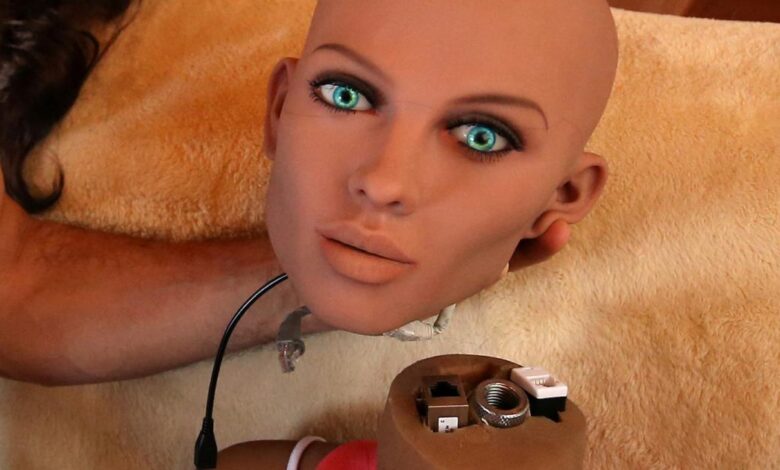The health science behind sexbots just isn’t there

A gyrating hellscape cast in red: behind big square windows, glassy-eyed droids swivel seductively in a soulless dance to lure warm-blooded patrons into their arms.
This is the sex industry, only reimagined. Amsterdam, 2050 is a place—if not the place—where the rise of sexbots might most easily translate into a global tourism opportunity. That’s how two Victoria University of Wellington professors imagined the famous Dutch red-light district in their 2011 paper (paywall) published in the journal Futures: a neighborhood remade so as to render human sex workers needless.
Since that paper published, sex-technology business has grown into a $30 billion industry, and become more serious about using robots to sexually gratify humans. The makers of these bionic seductresses (most of them are modeled after the female form) are making marketing promises that their industry will curb incidences of sex crimes and violence against women, that sex trafficking can be chipped away at, and that such robots might even be used as a tool to treat pedophilia.
But two different researchers this week published an editorial in the British Medical Journal calling into question many of the health claims sexbot manufacturers use to promote their machines. They did so after scouring a comprehensive database of available research to see if any of the claims have been backed by science.
No. There simply is no evidence that sexbots will curb sex trafficking. None that they will deter people from turning to prostitution. And none that the technology promotes safer sexual practices when made of washable, bacteria-resistant fibers.
“It is speculative whether the development of a sexbot marketplace will lead to lesser risk of violence and infections, or drive further exploitation of human sex workers,” the researchers say. In fact, their editorial raises concern about how such sexual machines may have a regressive element, as manufacturers “air-brush” them into fitting distorted views of conventional attractiveness.
By trying to put a halo of health over their increasingly lifelike sex robots, manufacturers are potentially misleading the public without the backing of any serious science. The editorial argues that now—before sexbots become ubiquitous—is the time to ensure we know what really happens when you mix real people with lifelike sexual robots. “Potential profits and rising demand will incentivize companies to produce cheaper sexbots,” they write. “We call for more research in this sphere.”
The industry is plugging away at perfecting the dolls for commercialization. In September 2017, one robotic sex-doll creator said his sexbot—which can switch to “family mode” when around children—can be used to improve marital relations between couples with disparities in sexual interest. During that interview, the robot, named Samantha, gave a taste of some of her other capabilities:
“I can take many times much more love just because you can give it,” she droned. “I take it all.”
You can read the full article from the source HERE.
-
Sale!

Aurora: Tender Sex Doll
Original price was: $2,799.00.$2,599.00Current price is: $2,599.00. Buy Now -
Sale!

Dominique: Thick Sex Doll
Original price was: $2,499.00.$2,199.00Current price is: $2,199.00. Buy Now -
Sale!

Auburn: Red Head Sex Doll
Original price was: $2,199.00.$1,899.00Current price is: $1,899.00. Buy Now






